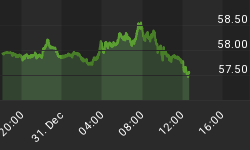This brief paper is just a "heads up" regarding something that has happened in the markets during the last few months. I am seeing a shift in the type of indicator which is optimized for the current market trading conditions.
During the first seven (7) months of 2005, we saw some well-defined trends which were a continuation of the significant trends which developed in 2004. Our Market Listener model was adapted to those trends using a momentum model based on the weekly MACD.
Beginning in July 2005 our weekly momentum model started showing signs of being out-of-sync with the market oscillations. Since July the returns on our hypothetical account have been down 2-3% compared to the +30% YTD gains which we had through July. The reason for our flat portfolio performance since that time has been due to the fact that the market has changed its character. That change is best defined as a shift from a trending market to an oscillating market. Our initial thought might be to shift our model over to an oscillator model.
The chart on the last page of this paper however, shows an analogous character shift in the Dow Jones Industrial average just as the market topped out and then sold off into the crash of October 1987. That shift in market character went from Momentum optimization to Oscillator optimization and then to crash.
The following chart shows a ZigZag of 4% on the daily NDX with MACD and Stochastic indicators. A close look at this chart will reveal that the slower MACD does a nice job catching steady trends, but loses its effectiveness when the markets move into oscillation.

Daily NDX Chart - 1 Year +
Our Market Listener trend following concepts include the ability to identify and adapt to the current market personality. One aspect of that personality is whether the market is in trending mode or is range-bound. When the market price is oscillating within that range, this is an indication that the market is searching for the next trend. The next trend could be up or down. Trend followers must be able to discern the difference between an oscillating range and a true trend. An oscillating range may be great for day-traders, but it is death to trend followers. Also, it should be noted that oscillations within a range are equivalent to pure noise or at least a very low value of "signal-to-noise" ratio. Trend following requires a signal-to-noise ratio which is higher than what we have at this time. I cannot develop this concept further in this paper at this time. I will go into more detail in the Listening Lab portion of our website at a later date. The purpose of this commentary is to alert you in a timely fashion to the possibility that the recent market oscillation mode may be a topping pattern not unlike October 1987.
Dr. Robert McHugh has given us fair warning regarding his modified Hindenburg Omens in prior SafeHaven commentary. You can read his most recent article at: http://www.safehaven.com/showarticle.cfm?id=3989
I know that many of you are trading on a very short time frame and that your current oscillator/stochastic indicators are fully on BUY signals. There is a need for caution until we get more evidence that the current rally has some more strength that will trend into year end and carry us to new 2005 highs in SPX. If you are currently using an oscillator as a trading indicator, you should be using a very fast indicator at this point. For our Market Listener Trader system, we will remain on a Cash signal until we have more evidence that the oscillation shift is NOT a topping indication.
We suggest that it is important to recognize the shift in market character and adapt your trading indicators accordingly. We are NOT PREDICTING a crash, but we are suggesting that we may have limited upside here compared to the potential downside risk analogous to October 1987.
Daily Chart - Dow Jones Industrials - 1987
This chart reveals that a shift occurred from a trending market to oscillating market before the crash.

















